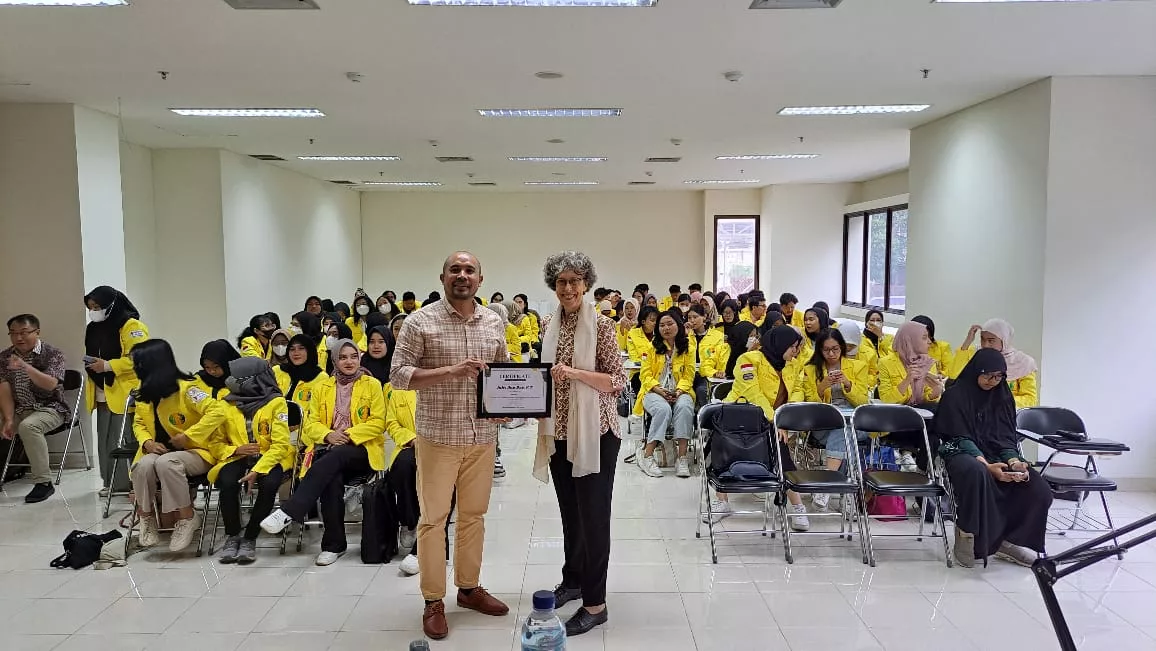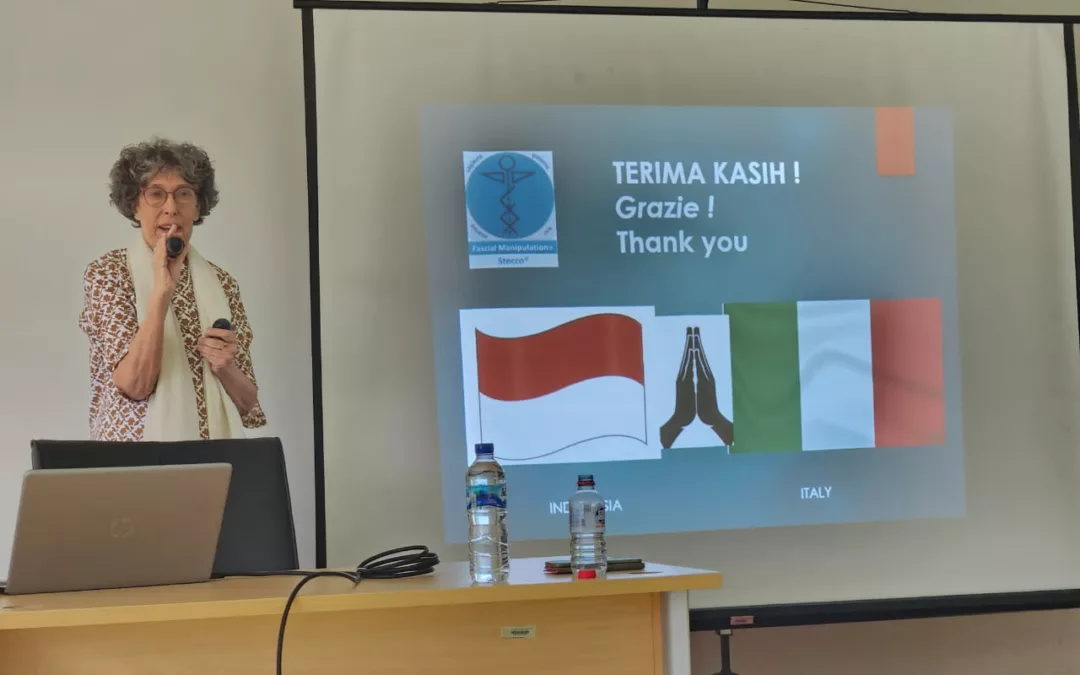Depok-Physiotherapist from the Fascial Manipulation Institute by Stecco, Italy, Julie Ann Day, P.T., was present as a guest lecturer to give an inbound lecture organized by the Physiotherapy study program, Vocational Education Program, Universitas Indonesia (UI) with the theme “Introduction of Myofascial Manipulation”. On August 29, 2023 in the UI Vocational Intraco Room, Julie explained one of the new methods of Lower Back Pain therapy, namely fascial manipulation.
Lower Back Pain (LBP) is a pain disorder that is often experienced by Indonesian people. The Indonesian Ministry of Health notes that at least 60-80 percent of the world’s population has experienced at least one lower back pain during their lifetime. Treatment for LBP is quite varied, ranging from medication to physiotherapy, depending on the degree of pain experienced.
Pain in the lower back can last for several days to several weeks, and can be triggered by injuries such as falls or impacts, excessive body movements, or lifting heavy weights. In addition, several other conditions that can cause lower back pain include muscle stiffness due to lack of movement, damage to the spinal joints due to aging, and disorders of the spinal nerves.
“The fascial manipulation method can be a method that can be applied by physiotherapists to intervene on several complaints experienced by patients,” said Julie, who has studied and been involved in the fascial manipulation method since 1998.
In general, fascial manipulation can not only be used for musculoskeletal conditions such as lower back pain and sprains, but can also be applied to internal organ problems such as gastritis (inflammation of the stomach wall) and dysmenorrhea (cramps during menstruation).
In her presentation, Julie Ann Day, P. T., said that fascial manipulation is a manual method based on an innovative biomechanical model for the human fascia system (the white tissue membrane that covers muscles) developed by Luigi Stecco. In fascial manipulation, the human body is divided into fourteen segments, with each segment being moved by six myofascial units.
 (Photo: Giving a certificate of appreciation to Julie for the lecture given)
(Photo: Giving a certificate of appreciation to Julie for the lecture given)
In front of nearly a hundred inbound lecture participants consisting of students and lecturers, Julie said, “Myofascial units are motor units that activate muscle fibers to move body segments in certain directions. Segments that have a role in fascial manipulation consists of three parts, namely sagittal plane (a plane that divides the whole body or parts of the body into dextral (right) and sinistra (left) segments); frontal plane (a plane that divides the whole body or part of the body into anterior (front) and posterior (back) segments; and horizontal plane (transverse plane through the body or part of the body and perpendicular to the sagittal and coronal plane).”
Before carrying out treatment, the physiotherapist needs to check the patient or client with an examination chart that tests the patient’s movement and the patient’s fascial structure. It will help physiotherapists to analyze the patient’s condition, especially their fascial system.
Director of the UI Vocational Education Program, Padang Wicaksono, S.E., Ph.D, said that UI Vocational continues to strive to invite domestic and foreign practitioners to provide their experiences in the industry as well as new insights that can be implemented in Indonesia. “As a higher education that is strong in practical skills, we provide the best education from various experts in their respective fields to teach students. “I hope that the students can learn a lot from the inbound lecture, especially the class of 2023 students who have just finished studying at UI Vocational,” said Padang.


